Collecting History
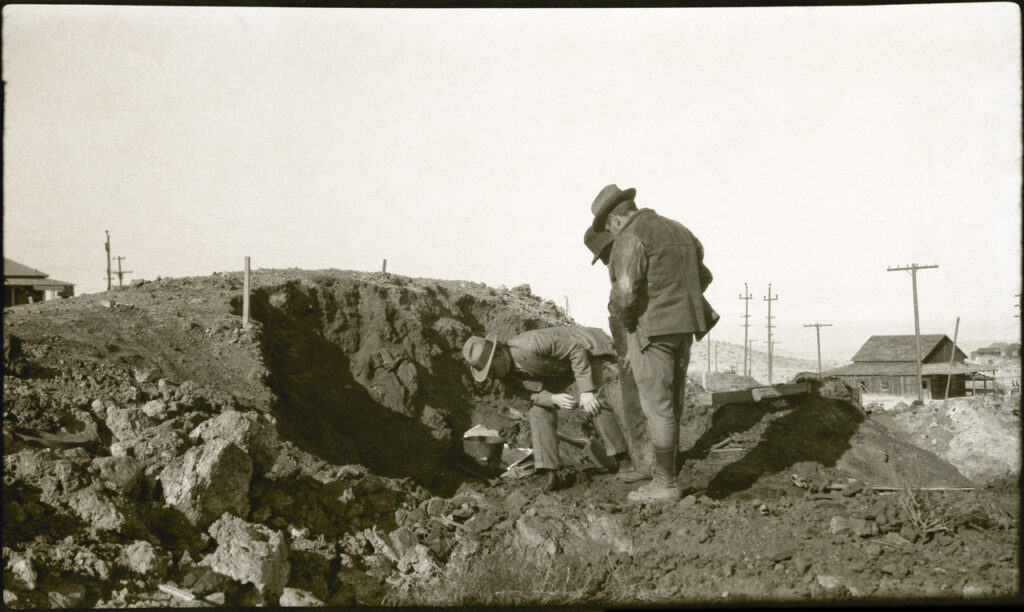
Construction of Highway 33 between Taft and McKittrick led to the discovery of fossils in the tar sands just outside of town. First announced to the world in a 1921 Science paper, most of the digging took place from 1921 to 1927. University of California crews dug the first pits. In 1925 Charles Sternberg moved to a cabin on-site and lived and worked there for two years.
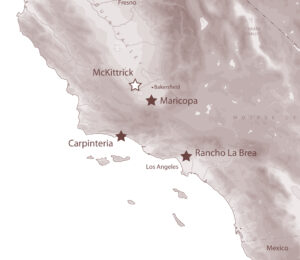
Thousands of fossils were dug out of the tar, using picks, chisels and shovels. They cleaned the bones with petroleum distillate and then carefully brushed the tar away. Then they preserved the bone with a coating of shellac. The fossils were then packed and shipped to the museum.
Several different pits were dug, and the fossils from the different pits vary in age. Using modern radio-carbon methods, we know some bones are as old as 26,850 years before present and some are as young as 11,160 years before present.
Geology of McKittrick site
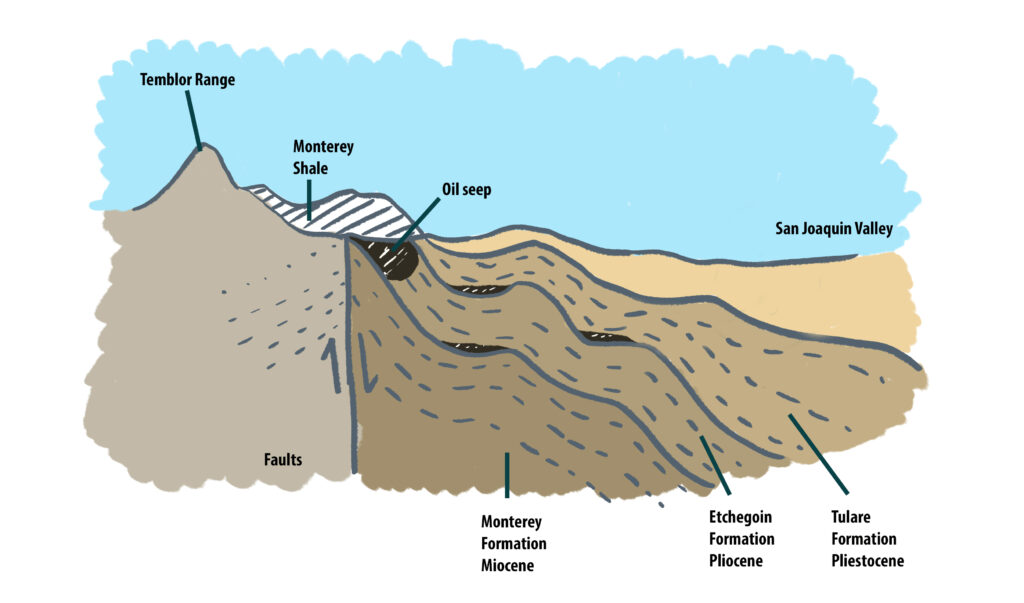
Located in western Kern County, California at the southern edge of the San Joaquin Valley where it meets the Temblor Range, the McKittrick seep site is underlain by Monterey Formation. The Monterey Formation was deposited 17 million to 5 million years ago during the Miocene Epoch and when a large area inland sea covered the Central Valley of California. It contains a high concentration of fossils, primarily diatoms and other marine siliceous microfossils.
The abundance of marine life fossilized in the Monterey Formation results in it being organic-rich, and responsible for much of California’s production of oil. Over millions of years, unicellular sea organisms called diatoms died, falling to the bottom of the seafloor and forming diatomite, a rock completely made of diatoms. Due to heat and pressure, the organic material of diatoms was formed into crude oil. This oil is trapped in a shale and today the McKittrick Oil Field in California is surrounded by multiple oil wells and petroleum extraction is the main source of industry in this hot and arid area.
Similar to McKittrick, another similarly oil rich area nearby is called Kettleman Hills. The UCMP has created a Virtual Field Experience around Kettleman Hills that can be visited here: Kettleman Hills VFEs.
The Tar Seeps
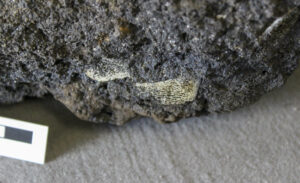
The tar seep sites are located just southwest of McKittrick proper, and are 5 miles in length. The tar forms a continuous string of tar seeps that may or may not be all active at the same time and so coalescence of the oil migrating to the surface occurs over time. Old tar seeps have been observed to become active again, supporting this theory of oil seeping through the surface over a period of time, in a multitude of separate events.
Although referred to as a ‘tar’ seep, it is not actually tar seeping out on the surface but asphalt. As the oil reaches the surface of the Earth, lighter components such as kerosene evaporate, leaving asphalt, the lowest form of crude oil. Moving through the earth, mixing with clay and sand along the way, results in the thick and stiff material found at tar seeps. During summer, the high heat of the area causes the oil to lose some of its viscosity and run more freely.
How did the fossils get there?
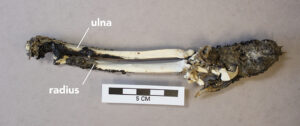
When people think of the words “fossil” and “tar”, most people imagine the La Brea tar pits, where the tar forms a thick pool of liquid rising up from a fissure in the ground. There both large and small animals became stuck and later die of starvation or exposure. Over days or weeks, the carcass becomes submerged. Once submerged, the oil ensured the preservation of the bones, leaving them for paleontologists to find. Tar seeps also follow fissures from ground faulting but are generally smaller in size and may spread on the surface rather than forming pits. Less sticky and gooey, entrapment was likely rarer at these tar seeps.Instead, it is probable the animals found in the tar seep actually perished somewhere else, and ended up in the tar due to flooding or some other kind of displacement.>The differences between how the La Brea tar pit and McKittrick tar seep are formed even have an impact on what types of animals are found in the tar.